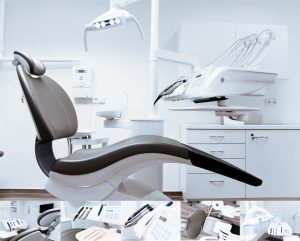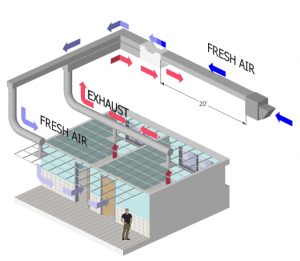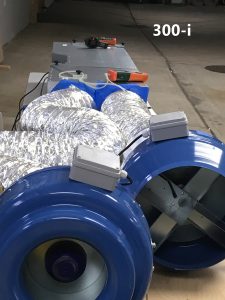The indoor air quality (IAQ) situation in many dentist offices is nothing to smile about on a good day. Citing the U.S. Department of Labor’s Occupational Information Network, Business Insider ranked the dental industry as the most hazardous job environment* thanks, in part, to contaminants, disease, and infection exposure. And that was before the pandemic.
Sink your teeth into this list of potential substances office staff may breathe in day in and day out:
- Chemicals Vapors such as mercury (from old fillings), porcelain and metal alloy castings, polymers, compounds, as well as anesthetic gases such as nitrous oxide
- Pathogens (bacteria, viruses, TB, SARS, etc.) from ill patients exhaled in droplets that can find their way into HVAC systems
- Bio-aerosol Microbes from saliva and blood, spewed into the air during dental procedures.
- Fine Dust from the grinding of materials.
Many of these substances can linger in the air, venture through the office HVAC, and be blown willy-nilly around the space—dispersed rather than pushed out of the building (displaced).
Dental defense mechanisms can lessen pathogens created in exam rooms.
While a steady flow of outdoor air exchange is critical, dental offices should protect staff and patients with PPE components. However, it is also possible to lessen pathogens and debris at the source:
- Rubber dams can corner off untreated areas of the mouth cavity, reducing the amount of microorganisms being aerosolized during treatments.
- High Volume Evacuator (HVE) systems suction up to 100 cubic feet per minute of saliva. A good amount of would-be bio-aerosols are captured and evacuated before escaping the patient’s mouth.
Mechanical ventilation needs to remove, rather than escalate air quality hazards.
To physically push stale, debris-riddled air from a space and replace it with fresh outdoor air, dental offices need high-quality local exhaust ventilation. ASHRAE’s minimum code recommendation for medical treatment rooms is 6 ACH (Air Changes per Hour) of total ventilation. Again, this is a minimum recommendation. Klas Haglid, P.E. and CEO of Haglid Engineering recommends 18 to 20 ACH. Such fresh air exchange rates can reduce airborne microorganisms, minimizing human exposure. Your best bet for achieving this? A high-efficiency Energy Recovery Ventilator with high-quality filters (MERV 8 or higher).
Negative pressure isolation exam rooms
The CDC recommends putting off non-essential dental procedures and preventative care during the pandemic. However, since a COVID-19 suspect patient may need emergency care—and patients might not know they have the virus—some dental offices are creating ‘negative pressure’ isolation rooms.
A negative pressure room can prevent contagious illnesses from spreading throughout a facility. When air is pumped out of the treatment area, a negative pressure space is created. As a result, when the door is open, air from corridors, admin offices, and the lobby will rush into the exam room—not out from it. Consequently, all that stale, possibly dangerous air can pass out of the building via local exhaust ventilation.
Beefing up your HVAC for healthier dental exam rooms
You don’t need to retrofit your entire HVAC system to make your dental environment safer. Instead, install a superior energy recovery ventilation module that utilizes high-grade filters, offers 70% to 90% Thermal Efficiency, and keeps relative humidity levels in range (40% to 60%) for minimizing proliferation of the COVID-19 virus.
The patented design of BPE Inc.’s ERV units sport true direct counter-flow, air-to-air heat exchangers with virtually no mixing of incoming and outgoing air, so you’ll know your indoor air is routinely refreshed … not recirculated. When it comes to optimizing the indoor air quality of a dental facility, BPE units fit the bill, quite literally. Not only do they handle today’s air quality hazards, they save money on energy bills!
Many dental offices will benefit from the BPE-XE-MIR-300-i model. Slimmer than other units, it will fit behind a drop ceiling nicely and provide extra oomph for meeting ideal air exchanges in more challenging environments.
In typical situations, BPE models provide ideal balanced ventilation. However, demand controls can adjust airflow for creating that negative pressure room. Have questions about your unique dental office configuration? Contact the folks at Building Performance Equipment, Inc.! Not only do they enjoy setting folks up with pristine indoor air quality; these days, they feel it’s their duty!
*Kiersz, A. (2015, November 2). The 27 Jobs That Are Most Damaging to Your Health. Business Insider. Retrieved from https://www.businessinsider.com/



